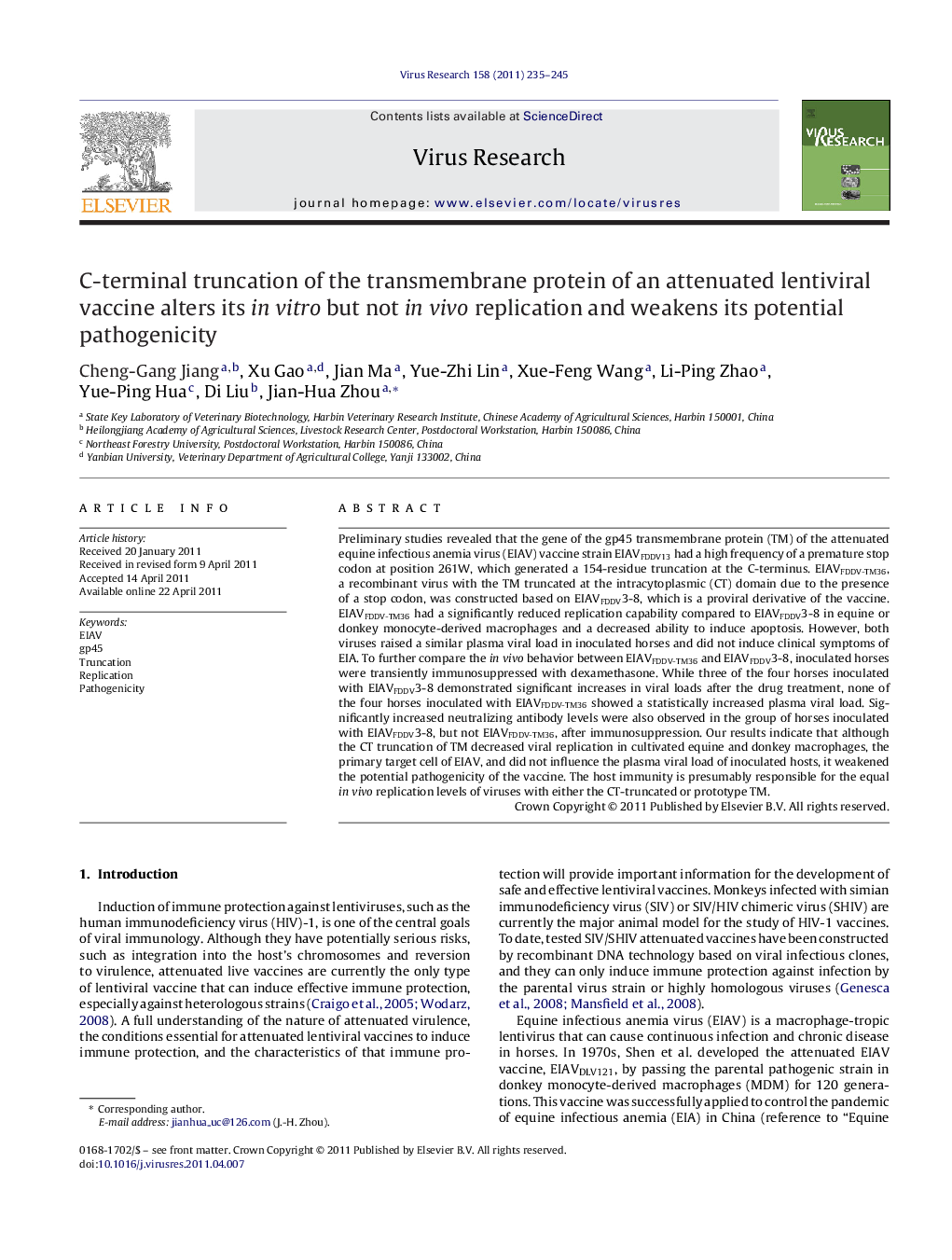| Article ID | Journal | Published Year | Pages | File Type |
|---|---|---|---|---|
| 3429011 | Virus Research | 2011 | 11 Pages |
Preliminary studies revealed that the gene of the gp45 transmembrane protein (TM) of the attenuated equine infectious anemia virus (EIAV) vaccine strain EIAVFDDV13 had a high frequency of a premature stop codon at position 261W, which generated a 154-residue truncation at the C-terminus. EIAVFDDV-TM36, a recombinant virus with the TM truncated at the intracytoplasmic (CT) domain due to the presence of a stop codon, was constructed based on EIAVFDDV3-8, which is a proviral derivative of the vaccine. EIAVFDDV-TM36 had a significantly reduced replication capability compared to EIAVFDDV3-8 in equine or donkey monocyte-derived macrophages and a decreased ability to induce apoptosis. However, both viruses raised a similar plasma viral load in inoculated horses and did not induce clinical symptoms of EIA. To further compare the in vivo behavior between EIAVFDDV-TM36 and EIAVFDDV3-8, inoculated horses were transiently immunosuppressed with dexamethasone. While three of the four horses inoculated with EIAVFDDV3-8 demonstrated significant increases in viral loads after the drug treatment, none of the four horses inoculated with EIAVFDDV-TM36 showed a statistically increased plasma viral load. Significantly increased neutralizing antibody levels were also observed in the group of horses inoculated with EIAVFDDV3-8, but not EIAVFDDV-TM36, after immunosuppression. Our results indicate that although the CT truncation of TM decreased viral replication in cultivated equine and donkey macrophages, the primary target cell of EIAV, and did not influence the plasma viral load of inoculated hosts, it weakened the potential pathogenicity of the vaccine. The host immunity is presumably responsible for the equal in vivo replication levels of viruses with either the CT-truncated or prototype TM.
► CT truncation of EIAV TM decreases viral replication in cultivated equine and donkey macrophages. ► It does not influence the plasma viral load of inoculated hosts. ► The host immunity is presumably responsible for the equal in vivo replication. ► The CT truncation weakens potential pathogenicity of the vaccine.
